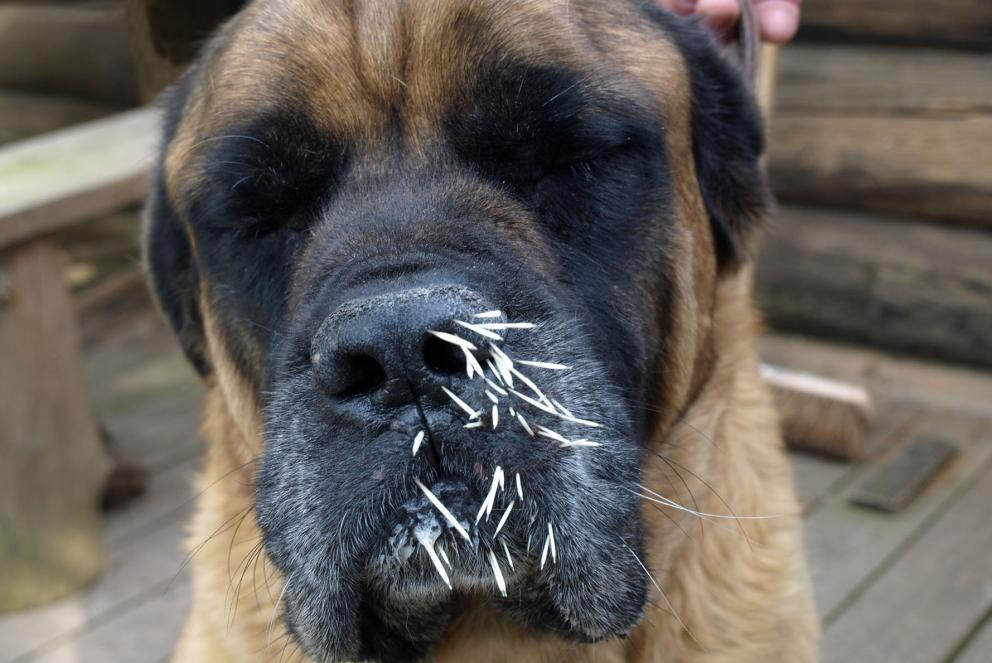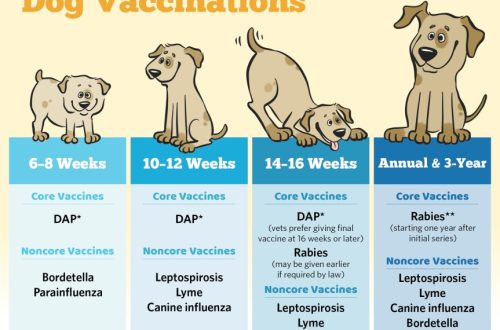
What to do if the dog has become a victim of porcupine quills?
The porcupine’s body is covered with over 30 quills, which it sheds if it suspects it is being attacked. This means that a dog will never come out victorious in a fight with a porcupine – even if it was more curious than aggressive towards the prickly creature. What to do in a situation where a dog has become a victim of porcupine quills?

Contents
Leave the needles to the professionals
Porcupine quills are designed to cause maximum harm. After all, it is the animal’s defense mechanism. At the end of each needle are tiny teeth, much like an arrowhead or a fishhook. After getting into the skin, it is difficult and painful to pull them out.
Therefore, pet owners should not attempt to remove needles themselves, River Road Veterinary Clinic advises. In addition to dogs, the River Road Clinic treated cats, horses, sheep and a bull, which, unfortunately, met with a porcupine.
If a dog comes home with a muzzle full of needles, you should immediately take him to the veterinarian for treatment. She will most likely be in a lot of pain. This pain will cause her to poke at the needles with her paw, which can cause them to dig even deeper into the skin or break, making it more difficult to pull them out. In addition, the longer the needles remain in the animal’s body, the more rigid and brittle they become, making them more difficult to remove.
Since a frightened and injured dog is more likely to bite or lash out, the veterinarian will likely inject the dog with an anesthetic to numb the pain before removing the needles. In addition, River Road Clinic reports that a veterinarian will recommend rabies quarantine and other preventive measures, as porcupines are known carriers of the disease. He may also prescribe antibiotics to reduce the chance of developing a bacterial infection.
Needles can cause internal damage
Due to their barbs, porcupine quills can become lodged in the dog’s soft tissues and move deeper into the body if not removed immediately. The more the animal moves, the more likely it is that the needles will break and dig deeper into the muzzle or paws. Do your best to keep your dog calm and still until you take him for treatment.
The Lucerne Veterinary Hospital warns that needles can dig into joints, damage internal organs or cause abscesses. It is best to take the animal to a veterinary clinic as soon as possible. The veterinarian may perform an ultrasound to locate deep needles and attempt to remove them, especially in cases where the dog was not brought in immediately after the attack.
Minimize the chance of encountering a porcupine
In order to minimize the likelihood of a pet encountering a porcupine, it is necessary to know the habits of the latter. According to the Angell Animal Medical Center of the Massachusetts Society for the Prevention of Cruelty to Animals, these mild-mannered, cat-sized herbivores feed exclusively on plants, fruit, and tree bark, and often sleep during the day in burrows or hollow logs. Porcupines are primarily nocturnal animals, so it is wise not to allow a dog to enter densely forested areas at night at night.
Keep your pet away from areas where porcupines are often found, especially if you suspect that there may be a porcupine den. One study published in the Canadian Veterinary Journal of 296 dogs who visited the veterinarian after a porcupine fight showed a marked increase in porcupine encounters in the spring and fall.
It is best to keep your pet on a leash and be aware of its surroundings to avoid any interaction with local wildlife. If your dog does encounter a porcupine, take him to the veterinarian immediately to give him a chance for a speedy recovery.





